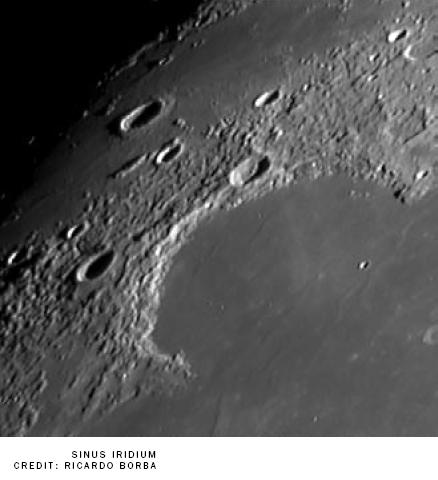The iridium sinus is one of the most interesting and impressive areas on the moon. Its diameter is 241 kilometers. And it is surrounded by the ring of the lunar Jurassic Mountains
Tammy Plotner and Jeff Barber, Universe Today

For all those who are outside the area of the storm and hopefully it will end by Thursday evening, this is an evening for the moon lovers, as our neighborhood continues to fill up and light up the night sky. There is no need to reset the telescopes thinking that there is nothing to see. This is one of the most romantic evenings for watching the moon.
The iridium sinus is one of the most interesting and impressive areas on the moon. Its diameter is 241 kilometers. And it is surrounded by the ring of the lunar Jurassic Mountains. The area is also known as Rainbow Bay. Despite the picturesque name, the area was created as a result of violent activity. Astronomers estimate that an asteroid or comet with a diameter of 200 kilometers hit the newly formed moon with a strong impact. The impact caused waves of materials that were heated to high temperatures to wash away the "coastlines" that form the C-shaped lunar formation.
The effect of viewing the bay is stunning when the soft waves of the sands in the inner parts are called tributaries, and they are broken only by a few small impact craters. Completing the picture is a view of the Heracleides and Laplas mountains rising above the surface (1,800 and 3,000 meters respectively) seen from afar as lighthouses standing at the mouth of the bay.
Before the moon rises even higher, it is an opportunity to see double - for example to watch 41 Origa. The pair - one star at magnitude 5 and the other at magnitude 7 are separated by a distance of 8 seconds of arc. The result looks like two stars moving side by side across the grazing field. 41 Origa and his companions are members of the Hyades group. To watch 41 you have to start with Beta Origa. Point to the center of the Fay, a little more up north. 41 is a pale star 5 degrees northeast of Phi. It is a challenge to locate it, but it will be a reason to be proud when you find it. Enjoy the view.
